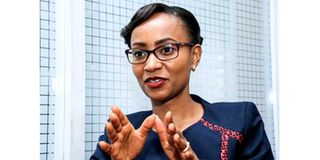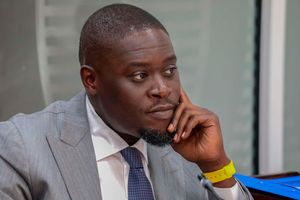How Gladys Gachanja started wearing the mentor hat in my life

Gladys Gachanja, a news anchor, reporter and producer.
What you need to know:
- I recently accepted a challenge to write a feature on a topic out of my comfort zone.
- Since I became a journalist, all my assignments have been decidedly about careers, entrepreneurship, art, and leadership.
I recently accepted a challenge to write a feature on a topic out of my comfort zone. Since I became a journalist, all my assignments have been decidedly about careers, entrepreneurship, art, and leadership.
This feature was different because I needed to speak to women significantly older than me about personal things such as their families and hormones.
I worked on the story brief and soon it was time to conduct interviews. I spoke to two senior editors about my worries, and they reassured me there was nothing extraordinary about asking women who wear power suits and sit on boards of multinationals, “what is changing about your body as you get older?”
I started writing but my reservations, driven by my cultural orientation about what I can and what I can’t ask older people, came back. In journalism, deadlines are sacred. This meant every day wasted in worry brought me closer to my deadline. I had to write. I had to speak to these women, and ask questions, which my reserved brain decoded as too private.
In this whirlwind, I remembered the power of Gladys Gachanja in my life. I dropped her an S-O-S on WhatsApp. Something like: “If you do not meet me immediately, my future might be in danger.”
Gladys wears many hats in my life depending on the occasion – big sis, mentor, therapist, friend… Anyway, as I had predicted, she managed to get me back to my ‘geek mode’. And the feature was done and dusted.
This is the story I told Gloria, who has been my friend for at least six years, when she asked me how work is going.
I mentioned to her how Gladys was a blessing in my life. Gloria is about two years younger than me. She stopped me in my tracks and asked: “How did Gladys become your mentor?”
Mentors are critical in lives. Figuratively speaking, mentors take a formless mass and help shape it, using lessons from their own experiences and insights gained through observation. I know you know this already.
Also read: Mentor the youth to give them hope
My answer to Gloria was simple: Gladys and I became friends long before she started wearing the ‘mentor cap’ in my life.
Although we worked in the same organisation, I got to speak to her for the first time at an off-site company event. She was a guest speaker. Listening to her experiences showed a value alignment between us.
For example, she is a devout Christian, subscribes to ethical journalism, and is a kind person. I decided to be her friend. I approached her. We exchanged numbers and our friendship became official. I was an intern at the time – about five years ago.
Our friendship then evolved to include all these other components. I thank God I am able to identify a potential mentor. Once I clarify my mentoring needs and I am certain I would like this person as a mentor, I Google them before I place my request.
Most often, this is someone I have had an initial encounter with – either we met at a conference, read about them, or watched their interview on TV. A formal request for me took a proper application letter for mentorship.
Because of this, I stand on the shoulders of giants. What is your mentorship story?
The writer is the Impact Editor, NMG; [email protected]




